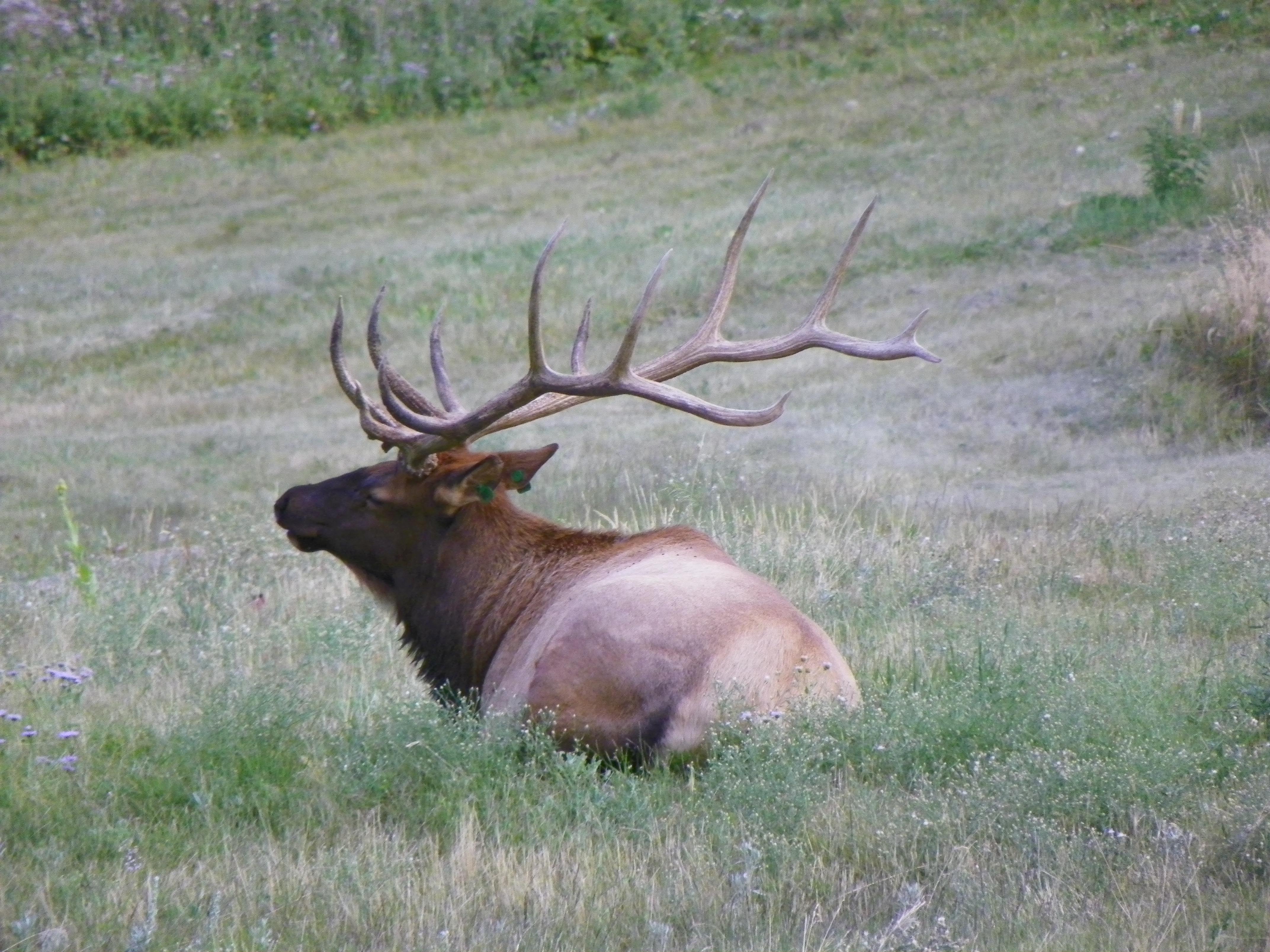The elk rut is a mating season for elk. The females, called cows, attract males by producing pheromones that are excreted through the skin glands on their legs and anogenital region. They also make loud sounds known as bugles to establish territories and repel other males. The duration of the mating period varies depending on geographical location, but it typically occurs in late September or October, with an earlier start in Idaho or Montana.
Elk are polygamous animals and can mate with more than one male at a time. Most herds will contain a single dominant male who will maintain dominance over the pack. The dominant male does not go into a rut as his technique for defending the herd is different from that of other males within the group. In Idaho and Montana, this does not occur until late September or very early October, whereas it could occur as early as mid-August in Wyoming.
Males with the lowest testosterone levels are uninterested in pursuing cows and from which they will avoid physical contact. If a cow approaches a low-testosterone male, he either flees or bluffs by assuming a presentation posture (head raised and shoulders crouched) to show that he is sexually ready.
Females may switch from one male to the next during the rut, and a high-testosterone male may lose his dominant position if he cannot mount a cow during the track. A low-testosterone male that cannot mount an available cow will leave the group and either find another herd or travel and establish his pack by himself.
The visual identification of a high- and low-testosterone male is made by looking for differences in appearance, posture, tone of the bugle, etc. The Northern Plains elk are capable of growing new antlers each year; therefore, they don’t always display all their antlers at once.
Things To Do in Estes Park
1. Rental Car Tour-Check out the reviews of rental cars and compare prices at CarRentals. When picking up your rental vehicle, pay particular attention to the type of insurance offered by your car company, as these things vary from one provider to another and may restrict your coverage for significant losses. Then head for Highway 66 to get a good start on a self-guided tour of the mountains.
2. The Little Thompson Trail-The Little Thompson Trail begins at the north end of Riverside Park in downtown Estes Park, CO, at E Prospect Ave and winds south along the river for 6.5 miles until reaching Walker Ranch Road, just past the point where the Big Thompson River joins. With its many access points, it can be as long or short as you want it to be but remember that most areas are steep and rocky with no shade, so pack lots of water.
3. Snowshoeing-Snowshoeing is a great way to get out of the city into nature in the winter. You can begin at West Elizabeth Lake, then follow the trails until you reach Elling Lodge.
4. Sky Mountain-Sky Mountain is a large, rocky hill that overlooks downtown Estes Park and offers spectacular views of the Rockies from its summit.
5. The Rocky Mountain National Park Monument-The national park’s entrance fee and special pass are accessible to residents of Colorado. Still, nonresidents must pay an additional $80 for seven-day access to all national parks, including Rocky Mountain.
The elk rut is when large numbers of elk move from the lower elevation areas in Colorado to the higher locations where the terrain becomes easier for them to graze. The Park Service employs civilian rangers and other seasonal workers who monitor Rocky Mountain National Park animals. With its high elevations, rocky mountains, and vast expanses of aspen, pine, and spruce forests, it is an excellent place for elk during the rut. For more details, contact the Colorado Elk Society at: http://www.coloradoelek.org/.


